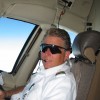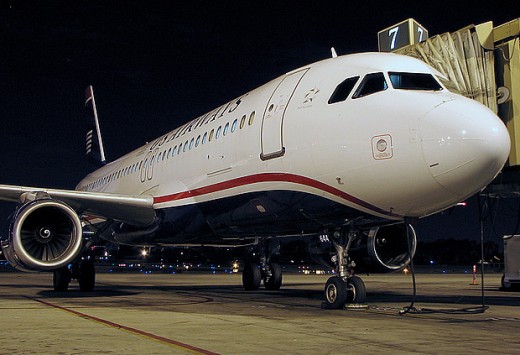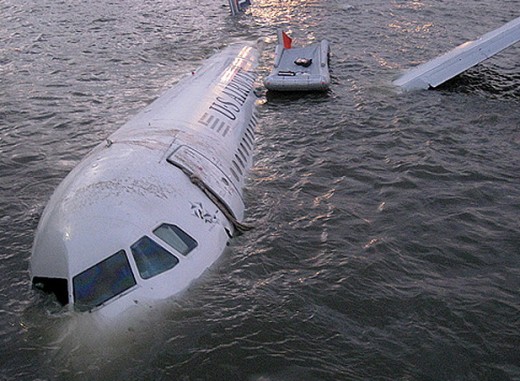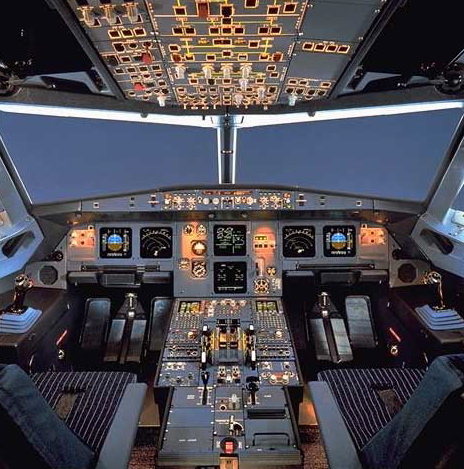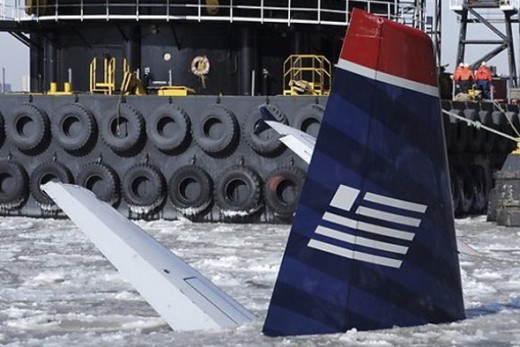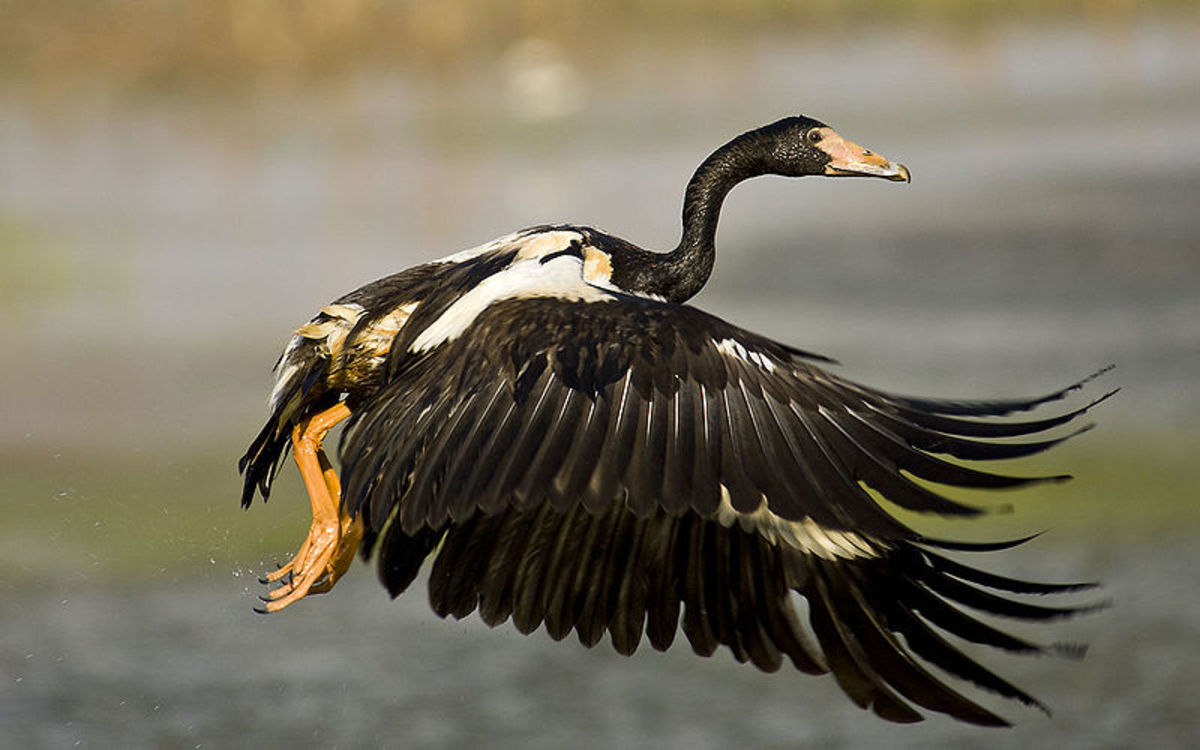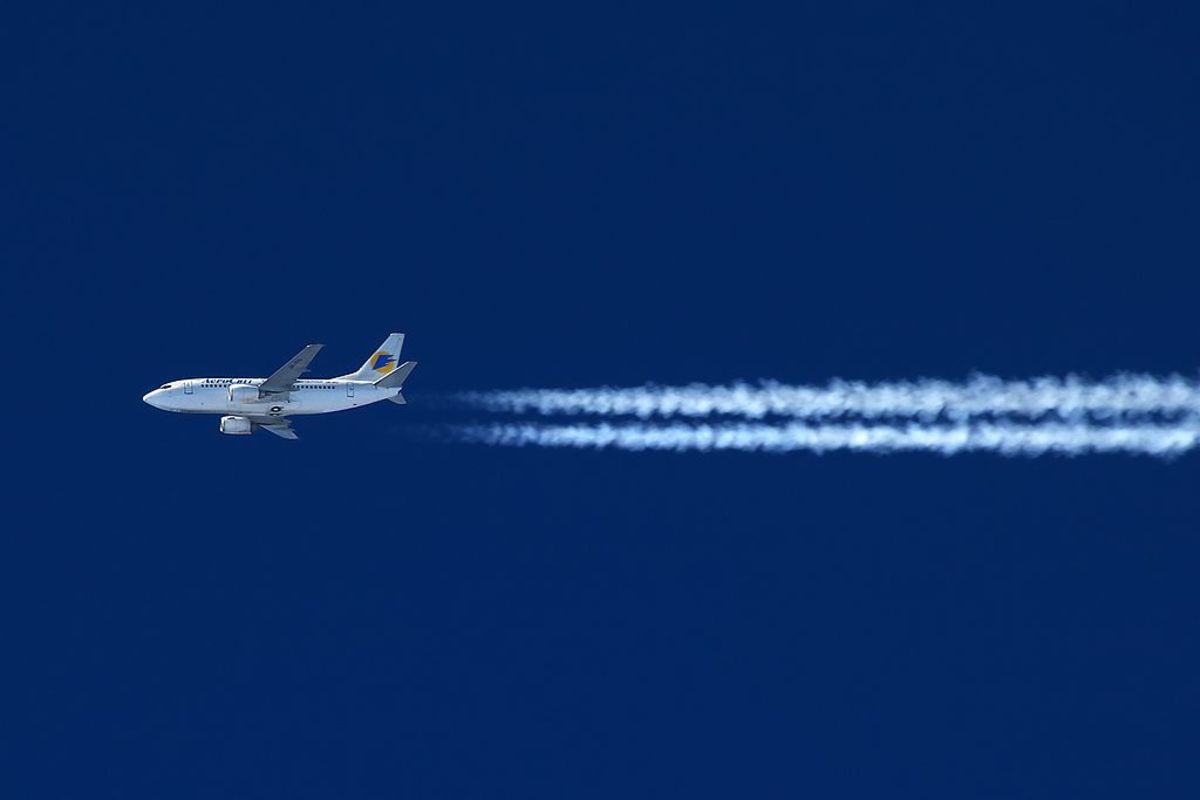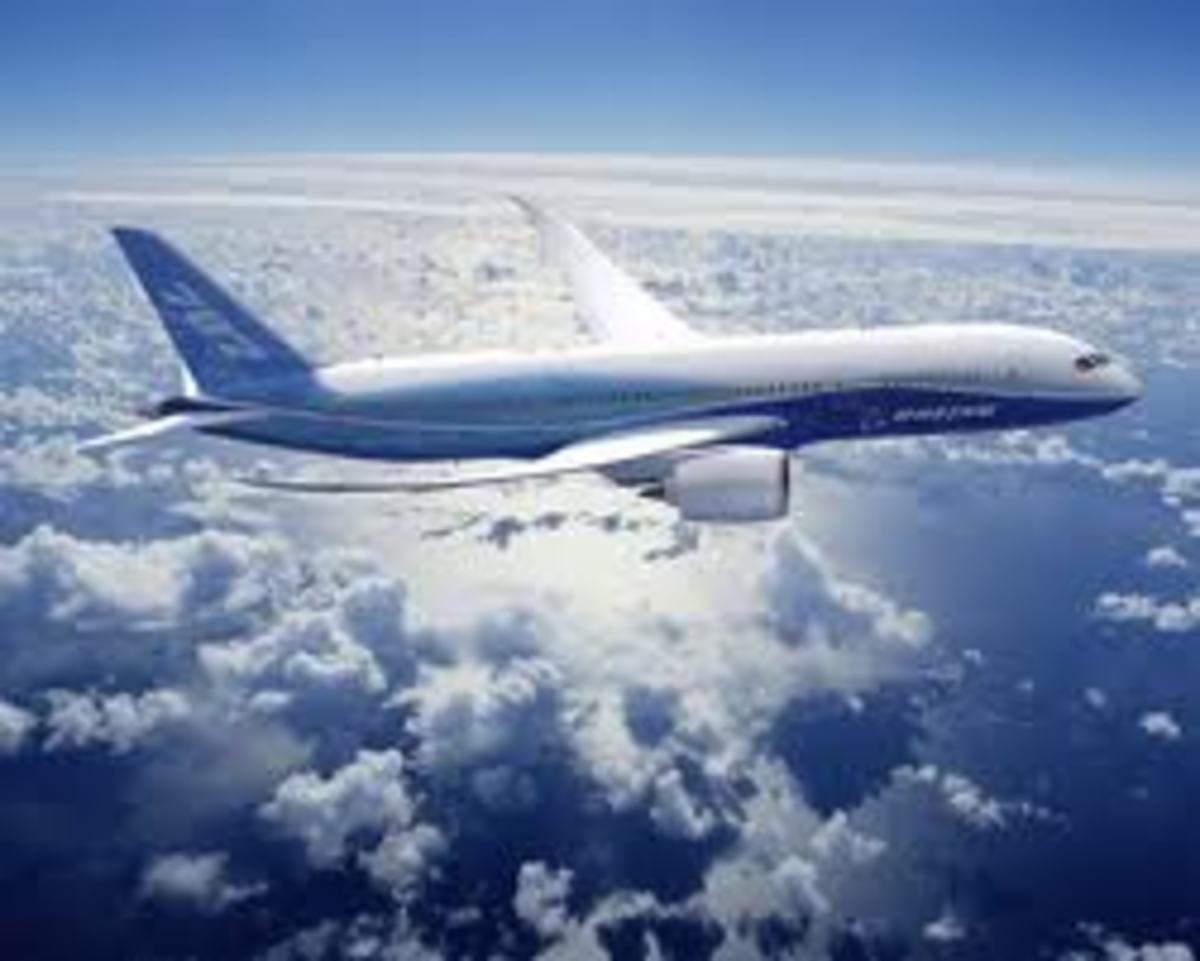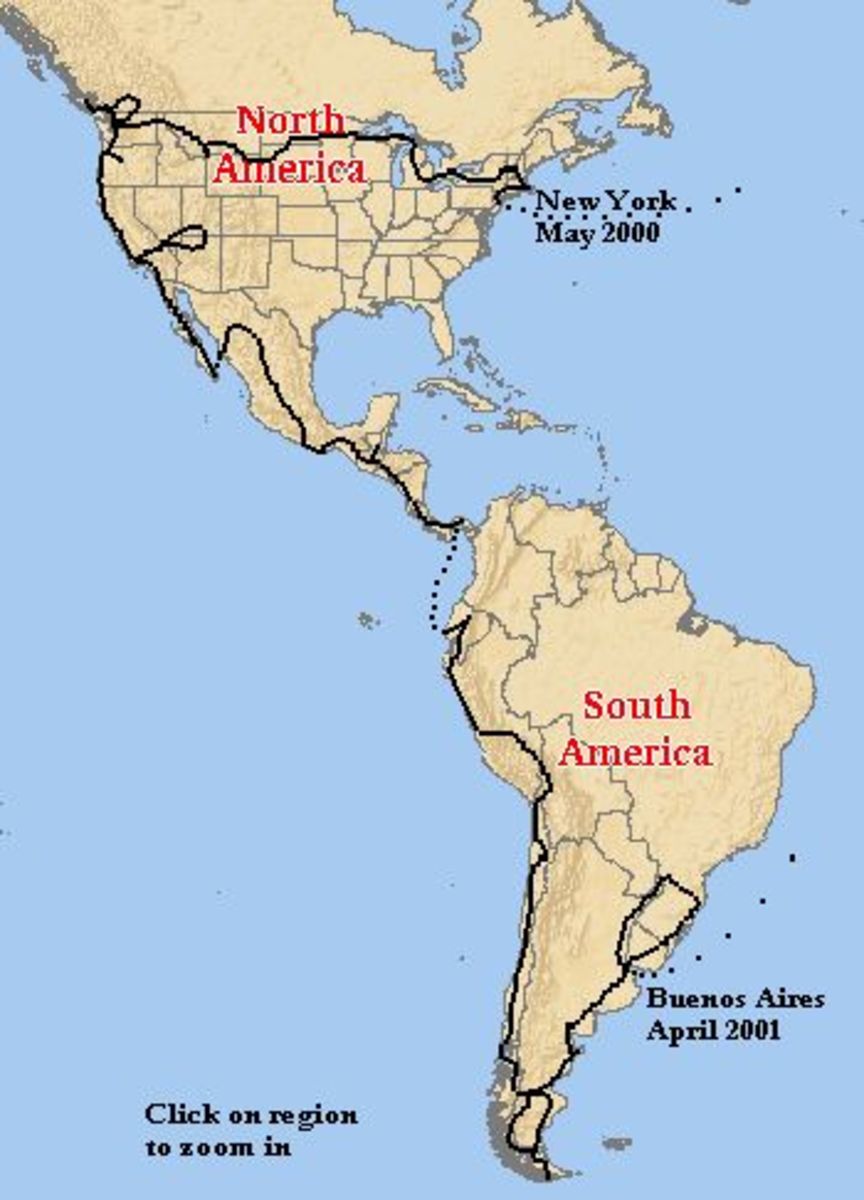How To Ditch An Airplane-The US Airways Flight 1549 Story
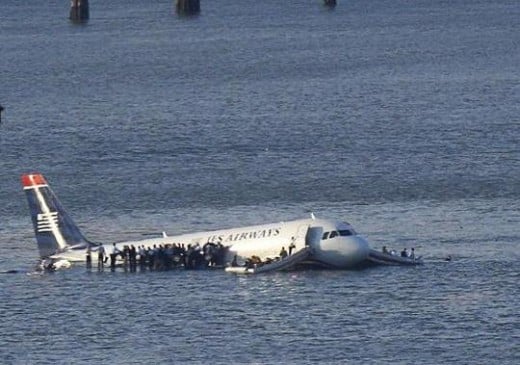
Sully Saves The Day!
"We're going to be in the Hudson" were the words US Airways Captain "Sully" Sullenberger calmly said to to the air traffic controller presiding over New York's departure traffic airspace on January 15, 2009. His Airbus A-320 airliner operating under the banner of Cactus 1549 had just ingested birds in both of it's engines resulting in their failure after departing Laguardia airport's runway 4 bound for Charlotte, North Carolina.
Shortly thereafter the airliner did in fact ditch in the Hudson river almost direrctly abeam the floating U.S.S. Intrepid aircraft carrier museum. The now-famous pictures and videos tell the story of the successful post ditching rescue of all passengers and crew. No lives were lost! A job well-done indeed; but how was this all possible? Please read on and I will educate you on how to ditch an airplane.
The Airbus A-320
Click thumbnail to view full-size





Jet Engines and Birds
The jet engine is a marvel of modern technology and is extremely well built and very reliable. Many will be surprised to learn that there are few moving parts and the engine's reliability is in large part due to this fact. The basic jet engine consists of a series of compressor sections, a fuel section, and a series of turbine sections. The compressor and turbine sections are nothing more than blades rotating around a central shaft that connects the two sections. Where the compressor meets the turbine we have the fuel section. When you look at a jet engine you can see the blades of the first compressor stage. The function of the compressor is to increase the pressure of the air. As the air progresses through the numerous compressor stages its pressure increases. When this compressed air reaches the fuel section, fuel is actually admitted and a spark plug ignites it. The fuel air mixture rapidly expands and continues through the turbine section at a very fast speed. This causes rotation of the turbine blades and since the turbine section shares the same rotating central shaft of the compressor section you can think of the turbine section driving the compressor section. And as a result of their being an equal and opposite reaction to every action thrust is produced and powered flight is possible. That's really all there is to the working of a jet engine! You are now an expert!
Typical Jet Engine
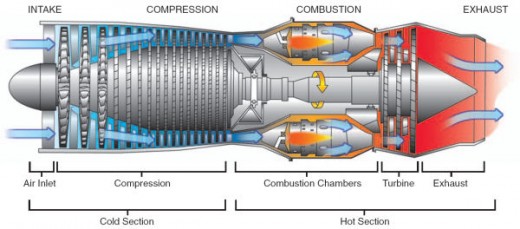
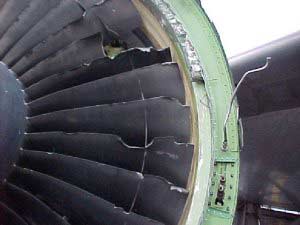
The blades of the compressor and turbine sections are made of titanium and are very strong. They are very smooth and the operation of a jet engine is dependent on a smooth airflow. You would be correct to think of them all as little rotating wings and the reason wings have a sleek smooth look is because in order to create lift that smooth character is absolutely essential! That's why we spend time to deice the wings when the possibility of ice and snow is present because that type of contamination destroys lift and that's bad! The same thing applies to the engine's blades.
US Airways 1549 attained an altitude of about 3000 feet above the ground after departing runway 4 at LaGuardia according to the news reports. For those of you who are interested the "4" designation is a direction indicator and means the runway is pointed in the direction of 40 degrees. In other words it is pointed northeast. Upon reaching 3000 feet both of the A-320's engines failed after ingesting birds. While we won't know exactly what the failure mechanism was until the investigation is completely over, bird ingestion is not uncommon. During my career as an airline pilot I have ingested birds on a number of occasions. What is uncommon is to lose all engines during a bird encounter. This has happened before with unfortunate results. Thankfully it is an extremely rare occurrence!
B-757 Compressor Stalls After Birdstrike
Keep in mind the strict requirement for smooth airflow through the engine and take a look at the photo of the damaged compressor blades. A small bird probably wouldn't do this type of damage. The engines are designed with bird strikes in mind and are completely capable of chewing up a small bird with no interruption of operation. Smaller birds don't damage the blades and thus won't cause airflow problems. I can attest to having ingested birds and not realized it until I find remains during the post-flight exterior inspection. Obviously the problem is magnified as the bird gets larger.
Large birds such as ducks and geese will almost certainly disrupt the airflow and thus cause what pilots call compressor stalls. It is analogous to your car backfiring and is the direct result of sustained interrupted airflow. During this condition the engine may even continue to produce thrust but will be extremely rough and loud bangs can be heard. Most of the time this will necessitate a manual shutdown of the engine and the airplane can be safely landed on the remaining engine.
However, it is very likely that ingestion of large birds will also cause blade separation and when one go's in all likely hood it will take out everything behind it as it passes through the engine resulting in a complete engine failure. This is what most likely happened simultaneously to US Airways 1549's engines leaving the crew with very few options; none of them good.
The Pilot's Options
Modern airliners are designed under very strict oversight and standards. One of the requirements of that design is that the airplane must-and I emphasize must-be capable of experiencing a complete engine failure on one of its two engines and be able to continue to climb and maintain altitude; all while the airplane is at its maximum gross weight. It's really quite amazing when you think of it!
However if a two-engine airliner experiences a dual engine failure you are in trouble especially at low altitude immediately after take-off. In general, a modern jet airliner has the capability of gliding 3 miles laterally over the ground for each 1000 feet of altitude above the ground it has attained. This assumes that there is no wind and that the airplane is flown straight ahead without turning. A head wind will drastically reduce this range and so will turning. During a turn an airplane loses some lift due to aerodynamic laws. This is true whether the engines are operating or not. However when the engines ARE operating the pilot can correct the "sink" by increasing engine power and by using the control column/steering wheel. The next time you fly when you are on approach and make steep turns you will hear the engines increase power. Now you know why!
Be that as it may the US Air crew had about 3000 feet and thus a maximum of 9 miles of glide available to them assuming perfect conditions. As you can see from the map of the airplane's flight path there were turns involved and the available glide range was probably more on the order of 3 or 4 miles. This is precious little space! Now consider the terrain in this small "circle of opportunity" surrounding the A-320. There are buildings, buildings, some more buildings and the Hudson river. You may be wondering why he didn't just turn around and go back to LaGuardia. It's a fair question for a non-pilot and may seem like a sensible option. However the airplane would have lost far too much altitude during the full turn back and would have landed well short of the airport.
Captain Sullenberger had 2 options only. Buildings or water. He chose water. He made the only decision he could. He chose to ditch! You may be surprised to hear me say that it was an easy decision. Pilots are all trained for the loss of power after take-off and we constantly practice evaluating scenarios and making appropriate decisions. Every airline pilot would have done the exact same thing Sully did! He did it very very well and his crew performed perfectly.

US Airways 1549 Re-enactment
The Decision To Ditch
After deciding on the only real option available, Captain Sullenberger only had a few minutes to prepare for the actual event itself. His considerations included coordination with his flight attendants and air traffic control, his speed, the configuration of the landing gear and flaps, and a good touchdown spot on the water. He was trained and prepared just as all airline pilots are.
Sully was presented with an ideal set of circumstance considering the situation he was in as you will soon learn. Jet airliners fly long distances over water all the time. There are airplanes over oceans every second of everyday and since this is normal, airlines must have contingencies for the extremely rare event that ends up in a ditching. Not only do the airlines consider this, but so do the airplane manufacturers and crews are trained in a particular airplane's proper ditching procedures. Most of the time this training focuses on the worst case scenario of ditching far from land in heavy seas with time to prepare. If you recall from earlier in the article, an airplane operating at 37,000 feet halfway to Europe could potentially glide over 100 miles using our 1000 feet/3 mile rule-of thumb which gives the crew time to prepare. Time was not on Sully's side in this case, but he did have things going for him.
Waves, notifying air traffic control of your position and the location of ships are a pilot's primary concerns when preparing for a mid-ocean ditch. Waves are a concern because if they are large enough you might fly into a wave face and the chances of survival are slim. Ideally we want to land parallel to the swells to avoid this. But how? If it is day time and there are no clouds and good visibility the pilot can visually determine this. If it is night or the weather is bad we must obtain a recommended ditch heading from air traffic control. US Airways 1549 had daylight, good weather and no waves-perfect conditions!
The other concern is making sure someone knows where you are when you finally enter the water so search and rescue can begin. There is no radar control over the ocean! A controller cannot "see" an oceanic airplane on radar unless that airplane is very close to a coast. So, search and rescue operations are dependant on the crew telling the responders where to go. The ocean is a big place and its going to take a long time for someone to reach you. There are ways of locating a ship to ditch by but this is by no means a guaranteed thing. Captain Sullenberg was confronted with perfect condition here as well. A narrow river in the middle of a major city with a plethora of rescue craft nearby and air traffic control radar that could watch him to the surface of the river! His location was not in doubt.

Landing On Water
Which brings us to the crowning moment! The only thing the crew really had to do was to fly the airplane onto the water using the appropriate procedures.
Regardless of whether you are landing on a nice long paved runway or a nice long flat stretch of water the attitude of the airplane should essentially be the same. You want a nose-high, tail-low pitch combined with a relatively slow speed. For ditching it is usually recommended that the nose is pitched up a little higher than for a normal landing, but only by a few degrees.This allows the tail to absorb the brunt of the impact and prevents a potential tumble. Of course on a normal runway the landing gear is extended, but when ditching, the gear remains up. This also prevents the nose-over tumbling tendency that would occur if the landing gear were allowed to "dig in" to the water and allows for a smoother touchdown. Flap usage is normally identical in both cases.
Airplanes are remarkably buoyant and will float for a long time. There are things the crew can do to improve their float time however. The most important thing is to plug the holes just as you would on a boat. Airliners have lots of holes too. The biggest one is the outflow valve. The outflow valve is where all the air flowing through the passenger cabin exits. It is a HUGE volume of air and the valve is likewise fairly big. On older airliners the crew must manually close this valve with the pressurization controls in the cockpit and it can take a minute to do this. Luckily the A-320 is a very modern airliner and it has a "ditching button" on the overhead panel in the cockpit. One push and the outflow valve and several others close making the cabin as watertight as possible.
And that's all there really is to it!
Great Job!
Airline crews are well-trained and this is a perfect example of that training at work. Captain Sullenberger and his whole crew deserve the thanks and appreciation I am sure they received from the passengers on flight 1549. Know that you are in the good hands of true professionals that are dedicated to your safety the next time you board an airplane.
Other Airplane Ditchings
- Pan Am Flight 943
October 16,1956-The Pacific Ocean - Northwest Orient Airlines Flight 2
April 2,1956-Puget Sound - Tupolev 124 ditching in Neva River
August 21,1963-Neva River - ALM Flight 980
May 2,1970-The Caribbean - Ethiopian Airlines Flight 961
November 23,1996-Indian Ocean - Tuninter Flight 1153
August 6,2005-The Mediterranean - Kenya Airways Flight 431
January 30,2000-Atlantic Ocean - American Airlines Flight 320
February 3,1959-East River-New York City - Swissair Flight 111
September 2,1998-Atlantic Ocean - SilkAir Flight 185
December 19,1997-Musi river - Armavia Flight 967
May 3,2006-The Black Sea - Garuda Indonesia Flight 421
January 16,2002-Bengawan Solo River
B-767 Ditching
Do You Know What To Do?
Aviation Links
- The Art of Travel-Scott757200's Travel Hub
Suggestions and ideas for traveling as lite as possible from a professional airline pilot - Best Aviation Online Magazines & News
Today when I was surfing through net and finding career opportunities in Aviation field, I came across some sites which are providing vital information about Aviation. I have collected some of them and here... - My Number One, All Time Favorite Joke Airline Humor
Approximately 60 years ago my father-in-law started a company called, Paco Plastics & Engineering Inc. He along with a partner set up shop in Sante Fe Springs, California. This company is one affiliated with... - Funny but true, Airline Quotes to Make you Laugh.
I so love these true quotes that come from airline staff. They have me on the floor laughing, and there are so many to choose from. This hub is dedicated to my favourites, and I am sure they will crack you...
